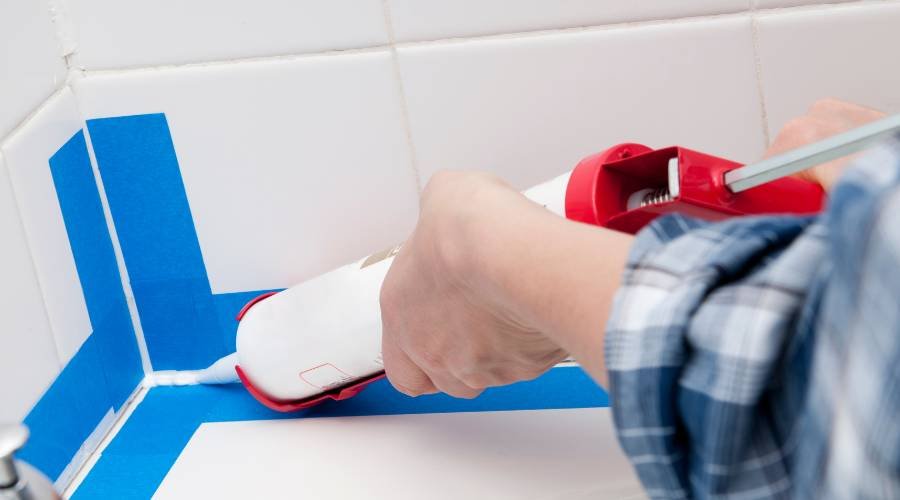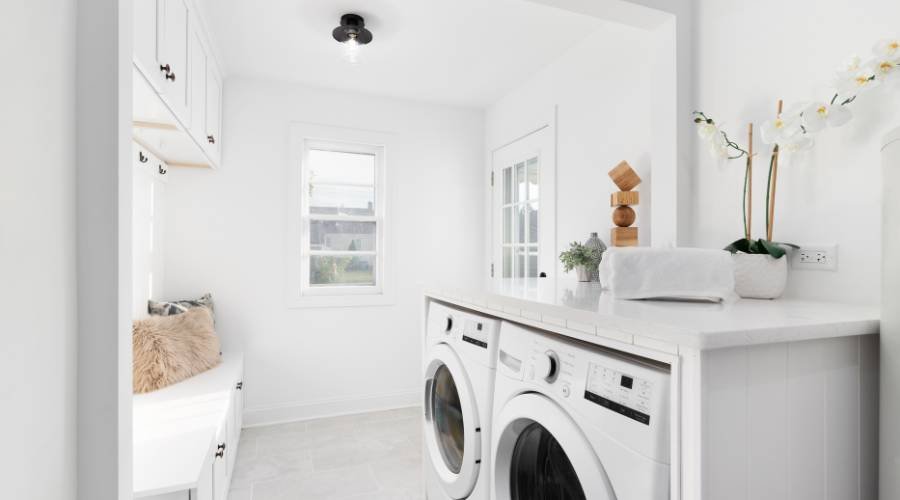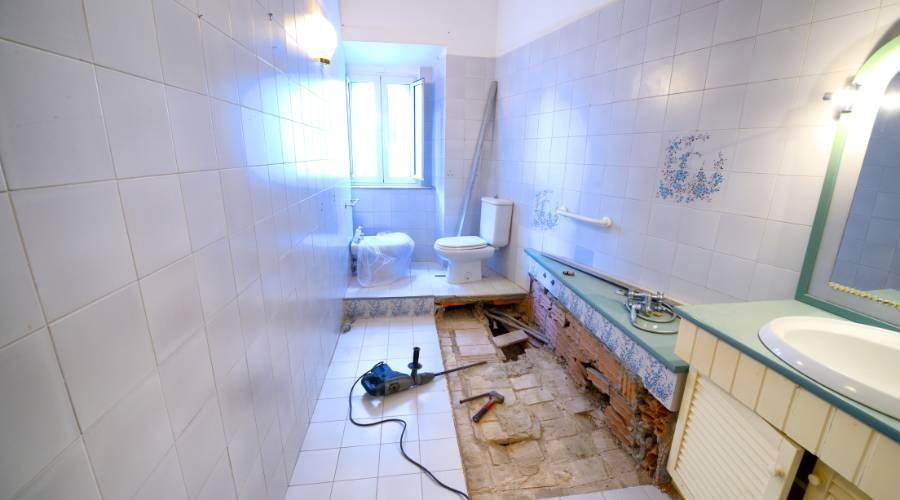Nothing destroys a beautiful bathroom renovation faster than water damage hiding behind your tiles. You might never see the problem until brown stains appear on ceilings below, musty odors develop, or tiles start lifting from walls – by then, water has been causing expensive structural damage for months or years.
Waterproofing represents the most critical element of any bathroom renovation, yet it’s often the least understood by homeowners. This invisible protection system determines whether your renovation lasts decades or requires costly remedial work within a few years. Get waterproofing wrong, and you’re facing potential repair bills that dwarf your original renovation investment.
For Gold Coast homeowners, proper waterproofing becomes even more crucial due to our coastal humidity, temperature fluctuations, and the salt air that accelerates material deterioration. Here’s everything you need to know about waterproofing bathroom renovations to protect your investment and peace of mind.
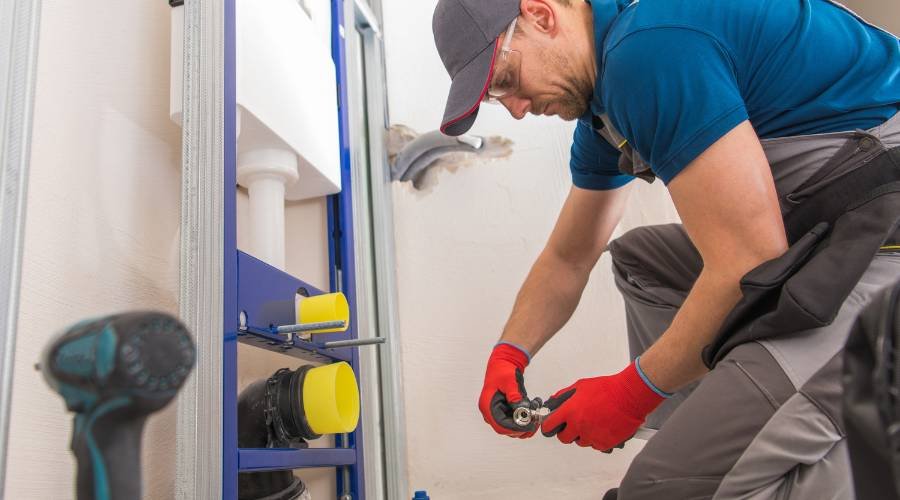
Why Waterproofing is Critical for Bathroom Renovations
Water damage from failed bathroom waterproofing creates devastating consequences that extend far beyond the bathroom itself. Understanding these risks helps you appreciate why proper waterproofing deserves serious investment and attention during renovation planning.
Structural Damage Prevention
Water penetrating behind tiles attacks timber frames, floor joists, and structural elements. This damage often remains hidden until it becomes severe enough to affect structural integrity, requiring extensive and expensive remedial work.
Mold and Health Protection
Moisture trapped behind walls creates perfect conditions for mold growth. These organisms compromise indoor air quality and create health risks, particularly for family members with respiratory sensitivities or compromised immune systems.
Insurance and Legal Compliance
Many insurance policies exclude water damage caused by inadequate waterproofing during renovations. Proper waterproofing with certification protects against claim denials while ensuring compliance with Australian building standards.
Property Value Protection
Water damage significantly impacts property values and can derail sales processes. Proper waterproofing documentation provides buyer confidence while protecting your investment’s long-term value.
Our certified waterproofing specialists ensure complete protection with comprehensive warranties and compliance documentation.
Understanding Australian Standard AS 3740
Australian Standard AS 3740 defines waterproofing requirements for wet areas in buildings. This standard isn’t just a guideline – it’s a legal requirement that determines whether your renovation meets building codes and insurance requirements.
Scope and Application
AS 3740 covers all wet areas in residential buildings, including bathrooms, laundries, and outdoor areas exposed to water. The standard specifies waterproofing locations, materials, and installation methods required for different applications.
Risk-Based Classification System
The standard classifies wet areas based on water exposure risk:
- Intermittent water exposure: Standard bathrooms with normal use
- Frequent water exposure: Commercial or high-use applications
- Continuous water exposure: Swimming pools and water features
Installation Requirements
AS 3740 specifies membrane materials, overlap requirements, penetration sealing methods, and installation techniques. Compliance requires proper surface preparation, appropriate membrane selection, and certified installation by qualified applicators.
Certification and Documentation
Compliant waterproofing includes written certification from qualified applicators, material compliance certificates, and installation documentation. This paperwork proves legal compliance and supports insurance claims if required.
Gold Coast Specific Waterproofing Considerations
Our coastal location creates unique challenges that standard waterproofing approaches might not address adequately. Understanding these factors ensures your bathroom renovation waterproofing performs reliably in Gold Coast conditions.
Humidity and Condensation Management
Year-round high humidity creates condensation challenges that stress waterproofing systems. Membrane materials and installation techniques must account for constant moisture exposure and thermal cycling.
Salt Air Corrosion Effects
Coastal salt air accelerates corrosion of metal fixings, drainage systems, and structural elements. Waterproofing systems must use corrosion-resistant materials and account for accelerated deterioration of vulnerable components.
Temperature Fluctuation Impacts
Gold Coast’s temperature variations cause expansion and contraction of building materials. Waterproofing systems must accommodate movement without developing cracks or separation that allows water penetration.
Severe Weather Considerations
Storm-driven rain and flooding create extreme water exposure that tests waterproofing systems beyond normal conditions. Robust installation and appropriate safety margins ensure protection during severe weather events.
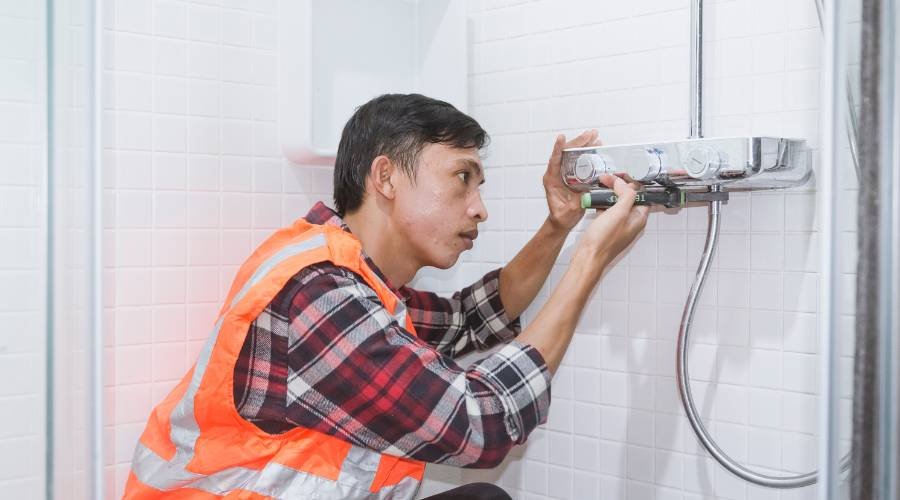
Types of Waterproofing Systems for Bathroom Renovations
Different waterproofing systems suit different renovation requirements, budget considerations, and performance expectations. Understanding your options helps you make informed decisions about protecting your bathroom investment.
Liquid Applied Membranes
Polyurethane or acrylic-based liquids applied with brush or roller. These systems create seamless protection that conforms to any surface shape while providing excellent adhesion to properly prepared substrates.
Advantages: Seamless application, excellent penetration sealing, cost-effective for complex shapes
Considerations: Requires skilled application, weather-dependent curing, multiple coats needed
Sheet Membrane Systems
Pre-manufactured waterproof sheets bonded to surfaces with adhesives. These systems provide consistent thickness and quality while offering excellent long-term durability and chemical resistance.
Advantages: Consistent quality, faster installation, excellent durability
Considerations: Higher material costs, requires careful overlap sealing, less flexibility for complex shapes
Cementitious Waterproofing
Cement-based products mixed with waterproofing additives. These systems bond excellently to concrete and masonry surfaces while providing good durability and cost-effectiveness.
Advantages: Excellent substrate bonding, breathable systems, good value
Considerations: Requires proper mixing, limited flexibility, surface preparation critical
Combination Systems
Using multiple waterproofing types for different areas based on specific requirements. Critical areas might receive premium protection while standard areas use cost-effective solutions.
Explore waterproofing system options suited to your specific Gold Coast renovation requirements.
Critical Waterproofing Areas in Bathroom Renovations
AS 3740 specifies minimum waterproofing requirements, but best practice often exceeds these minimums to provide enhanced protection and peace of mind.
Shower Areas – Maximum Protection Zones
- Floor to ceiling waterproofing for enclosed shower areas
- 1800mm height requirement for open shower areas
- Special attention to corners, penetrations, and substrate junctions
- Integrated drainage waterproofing and testing
Bath Surrounds and Wet Zones
- 150mm above bath rim minimum, 1200mm recommended
- Behind taps and mixer installations
- Adjacent floor areas subject to water exposure
- Connection details between different waterproofed areas
Floor Waterproofing Requirements
- Complete floor coverage in bathroom areas
- Extension under vanities and fixed furniture
- Proper slope to drainage points
- Integration with wall waterproofing systems
Penetration Sealing Critical Points
- Pipe penetrations through waterproof areas
- Electrical conduit and outlet locations
- Fixture mounting points and structural connections
- Ventilation and services integration points
The Professional Waterproofing Installation Process
Quality waterproofing requires systematic installation following proven processes. Understanding these steps helps you recognize proper installation and identify potential shortcuts that compromise protection.
Surface Preparation and Assessment
Proper surface preparation determines waterproofing success more than any other factor. Surfaces must be clean, sound, appropriately primed, and free from contamination that prevents membrane adhesion.
Substrate Repair and Preparation
Any cracks, holes, or imperfections must be repaired before waterproofing application. Movement joints, structural cracks, and substrate defects require specific repair methods before membrane installation.
Primer Application and Conditioning
Most waterproofing systems require specific primers that enhance adhesion and substrate compatibility. Primer selection depends on substrate type, moisture content, and membrane system requirements.
Membrane Installation and Quality Control
Systematic membrane application following manufacturer specifications and AS 3740 requirements. This includes proper overlap dimensions, corner reinforcement, and penetration sealing techniques.
Curing and Protection Period
Waterproofing membranes require specific curing conditions before tile installation can commence. Protection from damage, contamination, and premature loading ensures membrane integrity.
Testing and Certification Process
Flood testing, visual inspection, and documentation verify installation quality and compliance. Written certification provides legal compliance proof and warranty protection.
Common Waterproofing Failures and How to Prevent Them
Understanding how waterproofing fails helps you recognize quality installation and avoid contractors who might compromise your protection through shortcuts or inexperience.
Inadequate Surface Preparation
Poor cleaning, insufficient priming, or application over unsuitable substrates causes adhesion failure. Prevention requires thorough preparation and appropriate primer selection for substrate conditions.
Insufficient Membrane Thickness
Applying thin coats to save material creates weak points that fail under normal stress. Quality installation maintains specified thickness throughout the protected area.
Poor Penetration Sealing
Pipes, drains, and fixtures create complex sealing challenges. Inadequate sealing around these penetrations represents the most common waterproofing failure point.
Inadequate Overlap and Joint Sealing
Sheet membrane systems require proper overlap dimensions and sealing techniques. Poor overlap preparation or inadequate sealing creates water paths through the protection system.
Premature Membrane Damage
Installing tiles or other finishes before membranes cure properly can damage waterproofing integrity. Following specified curing times ensures membrane strength before loading.
Missing Protection During Construction
Foot traffic, dropped tools, and construction activities can damage waterproofing before protective finishes are installed. Proper protection protocols preserve membrane integrity.
Waterproofing Maintenance and Longevity
Proper waterproofing should provide decades of reliable protection, but understanding maintenance requirements and warning signs helps preserve this protection throughout your bathroom’s life.
Regular Inspection Protocols
Annual visual inspections identify potential problems before they cause damage. Check for tile movement, grout deterioration, or water stains that might indicate membrane problems.
Maintenance Requirements
Most waterproofing systems require minimal maintenance beyond protecting against physical damage and maintaining surface finishes that protect underlying membranes.
Warning Signs of Waterproofing Problems
- Water stains on ceilings or walls adjacent to bathrooms
- Musty odors suggesting hidden moisture problems
- Tile movement, cracking, or lifting from surfaces
- Grout deterioration or persistent moisture in grout lines
- Paint failure or wallpaper lifting in adjacent areas
When Professional Assessment is Required Any signs of water penetration require immediate professional assessment. Early intervention often prevents minor problems from becoming major disasters requiring complete renovation rebuilds.
Schedule waterproofing inspection if you suspect problems with existing installations.
Cost Considerations for Waterproofing Bathroom Renovations
Understanding waterproofing costs helps you budget appropriately while recognizing the value of proper protection compared to potential remedial work expenses.
Standard Waterproofing Investment
Basic compliant waterproofing typically represents 8-12% of total renovation costs. This investment provides essential protection and legal compliance while supporting warranty coverage.
Premium Protection Options
Enhanced waterproofing using superior materials or extended coverage areas might cost 15-20% more but provides additional security for valuable renovations or challenging conditions.
Cost of Waterproofing Failures
Remedial work after waterproofing failure often costs 2-3 times the original renovation investment. This includes demolition, remedial repairs, and complete renovation reconstruction.
Insurance and Warranty Considerations
Proper waterproofing with certification protects against insurance claim denials while providing warranty coverage for material and installation defects.
DIY vs Professional Waterproofing Installation
While some renovation tasks suit DIY approaches, waterproofing requires specialized knowledge, materials, and installation techniques that typically exceed amateur capabilities.
Complexity of Proper Installation
AS 3740 compliance requires understanding substrate preparation, material compatibility, installation techniques, and testing procedures. Mistakes often aren’t apparent until expensive damage occurs.
Material and Tool Requirements
Professional waterproofing requires specialized materials, application tools, and safety equipment. Quality materials often aren’t available through retail channels accessible to homeowners.
Certification and Warranty Benefits
Professional installation provides written certification, compliance documentation, and warranty coverage that protects your investment and satisfies insurance requirements.
Risk Assessment Considerations
Waterproofing failure costs far exceed professional installation expenses. The peace of mind from certified protection often justifies professional installation investment.
Compare DIY vs professional waterproofing to understand the best approach for your renovation.
Choosing Qualified Waterproofing Contractors
Selecting appropriate waterproofing contractors ensures quality installation, compliance certification, and warranty protection for your bathroom renovation investment.
Essential Qualifications and Certifications
- Current waterproofing licenses and trade qualifications
- Insurance coverage including professional indemnity
- Manufacturer training and certification for specified systems
- AS 3740 compliance knowledge and experience
Reference and Portfolio Verification Request recent project references and inspect completed installations. Quality contractors readily provide evidence of successful projects and satisfied clients.
Quote Evaluation Criteria Compare detailed quotes specifying materials, installation methods, testing procedures, and certification provisions. Avoid quotes that lack specific technical details or compliance references.
Warranty and Support Commitments Understand warranty terms, maintenance requirements, and ongoing support availability. Quality contractors stand behind their work with comprehensive warranty coverage.
Frequently Asked Questions About Waterproofing Bathroom Renovations
How long does bathroom waterproofing last?
Quality waterproofing systems typically provide 15-25 years of reliable protection when properly installed and maintained. Premium systems with proper maintenance can exceed 30 years of effective service life.
Can I tile immediately after waterproofing installation?
Most waterproofing systems require 24-48 hours curing before tile installation. Our installation teams coordinate timing to ensure proper curing without project delays.
Is waterproofing required for all bathroom renovation areas?
AS 3740 specifies minimum waterproofing requirements for different bathroom areas. Professional assessment determines appropriate protection levels based on water exposure risk and building requirements.
What happens if waterproofing fails after renovation completion?
Certified waterproofing includes warranty coverage for material and installation defects. However, prevention through quality installation is preferable to remedial work after failure occurs.
How can I verify waterproofing quality during installation?
Quality waterproofing includes visual inspection opportunities, flood testing where appropriate, and comprehensive documentation. Professional contractors welcome inspection and provide detailed installation records.
Protect Your Bathroom Renovation Investment
Waterproofing represents the foundation of successful bathroom renovations – invisible protection that determines whether your investment provides decades of satisfaction or expensive problems requiring remedial work. Quality waterproofing prevents structural damage, protects family health, and preserves property values while providing peace of mind.
The key to waterproofing success lies in understanding requirements, selecting appropriate systems, and ensuring professional installation with proper certification. When these elements combine correctly, waterproofing provides reliable protection that outlasts most other renovation components.
Don’t compromise your bathroom renovation with inadequate waterproofing. Consult with certified waterproofing specialists who understand Gold Coast conditions and can ensure your renovation receives the protection it deserves.

